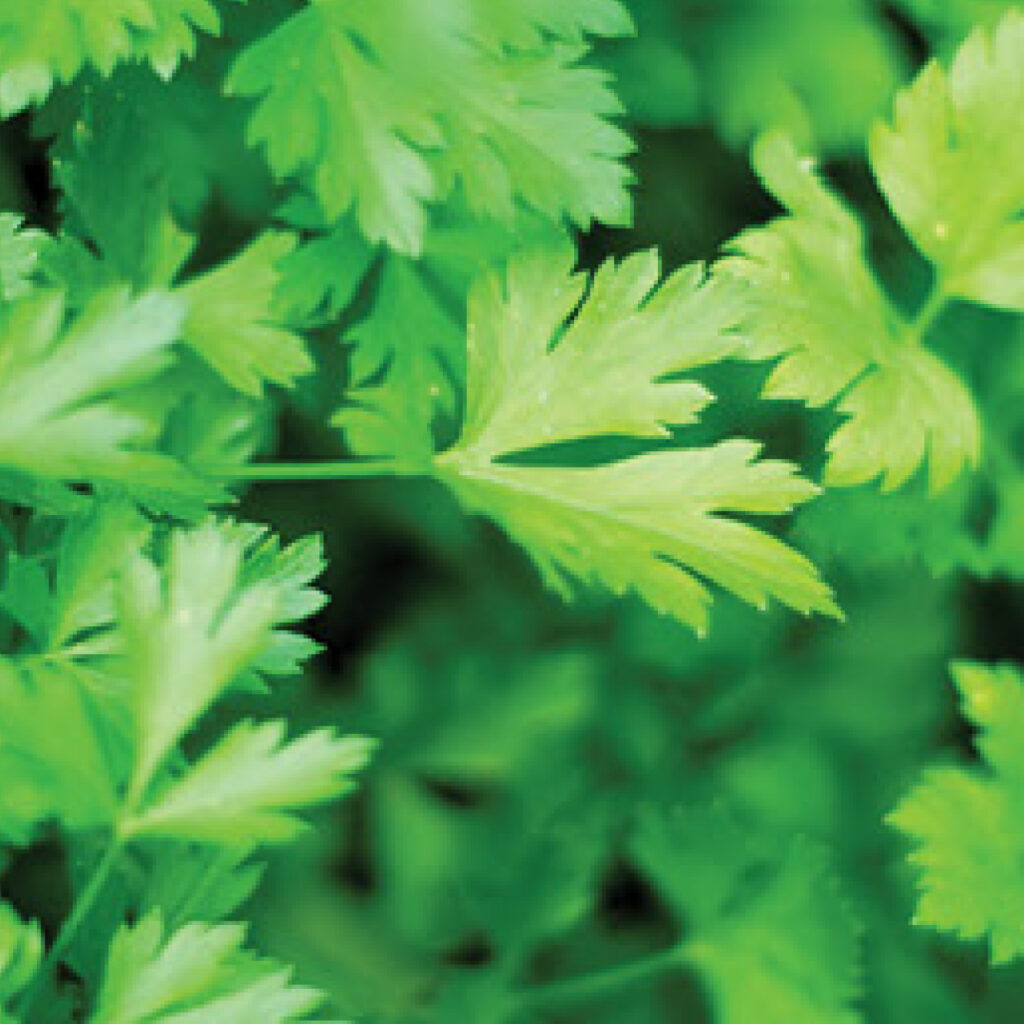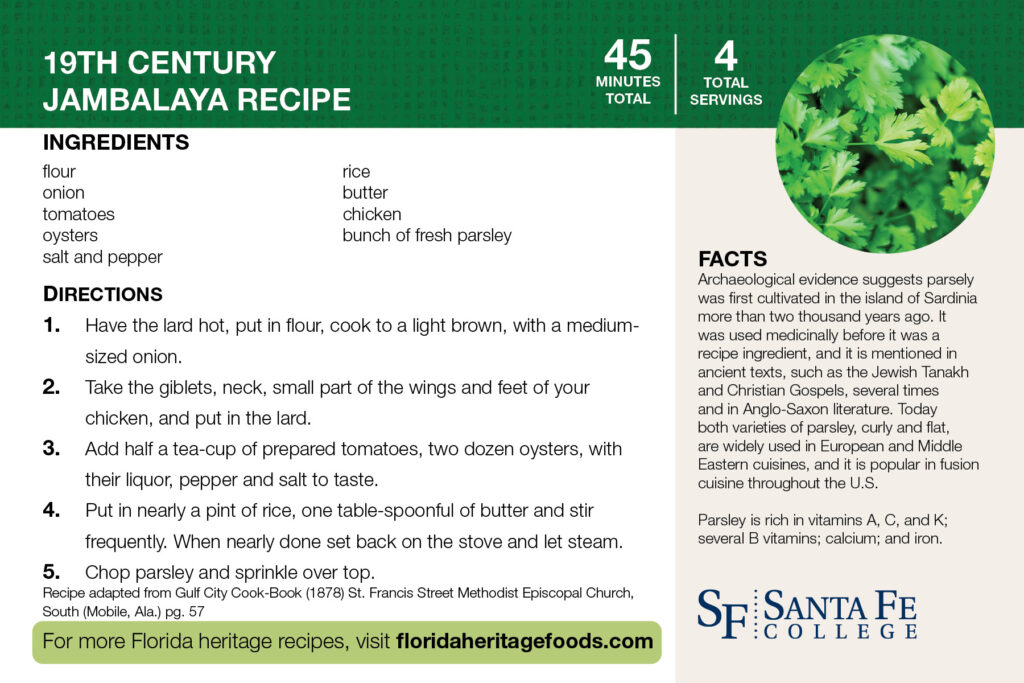Jambalaya is a meat and vegetable stew served over rice that originated from an ethnic fusion of French, Spanish and African influences known as Cajun or Creole. The ingredients usually include a blend of meats, primarily sausage along with cuts or pork, chicken or shellfish cooked with onions, celery, bell peppers, tomatoes, corn, chilis and/or garlic. There are two different varieties; ‘red jambalaya’ is a Creole dish that includes tomatoes, and ‘white jambalaya’ is a Cajun dish that does not.’

Jambalaya originated in Louisiana where French and Spanish colonial cultural influences merged with African and indigenous traditions to create Cajun or Creole ethnic groups that extend out from Louisiana and into the Florida Panhandle. During the colonial period, Europeans established rice plantations and relied on enslaved Africans to provide labor and expertise needed to cultivate rice in the Americas. It is believed that the Gullah Geechee, an ethnic group of enslaved African origins who lived along the coastal regions and worked the rice plantations, were among the first to prepare the dish. The name first appeared in print in an 1837 French publication by Fortuné (Fortunat) Chailan entitled, Leis amours de Vanus; vo, Lou paysan oou théâtré.’ It was later described in an 1849 American Agriculturalist magazine. The Gulf City CookBook published a recipe in 1878. Jambalaya was popularized among poor and low-income workers during the early 20th century because it was a hearty, yet flexible, recipe that made use of what was available. By 1968, the town of Gonzales, Louisiana was named the ‘Jambalaya Capital of the World’ by Louisiana Governor John J. McKeithen, and the annual Jambalaya Festival still takes place every spring today.
Jambalaya reflects a variety of rice and meat dishes prepared in West Africa, such as ‘Jollof rice,’ as well as a Spanish dish known as ‘paella’ and French provincial cuisine. Heavy debate surrounds the origins of the name, and some scholars argue that it is a blend of ‘Jollof’ and ‘Paella’ while others suggest it comes from French jambalaia, meaning ‘mix-up. It is well-known as the signature dish of American Cajun and Creole cuisines. ‘Red Jambalaya’ is considered the Creole version that includes tomatoes, and Cajun jambalaya does not. Neither version includes okra which is the main ingredient in a similar Cajun dish called ‘Gumbo.’ Unlike paella and other related dishes, Jambalaya is served atop a bed of rice that has been cooked separately. The versatility of Jambalaya, known more as a cooking technique rather than a rigid set of recipes, has enabled the dish to spread beyond the South and into urban restaurants and cafes and generated a wide range of variations throughout the United States today.



Santa Fe College Partnered with Multiple Organizations in a Collaborative Effort to Bring Awareness of the Heritage Plants In Florida.
BY CULTURAL HISTORY
BY GROWING SEASON
DROUGHT TOLERANT PLANTS
Commitment to Equal Access and Equal Opportunity
Santa Fe College is committed to an environment that embraces diversity, respects the rights of all individuals, is open and accessible, and is free of harassment and discrimination. For more information, visit sfcollege.edu/eaeo or contact equity.officer@sfcollege.edu.
SACSCOC Accreditation Statement
Santa Fe College is accredited by the Southern Association of Colleges and Schools Commission on Colleges (SACSCOC). For more information, visit sfcollege.edu/sacscoc.
